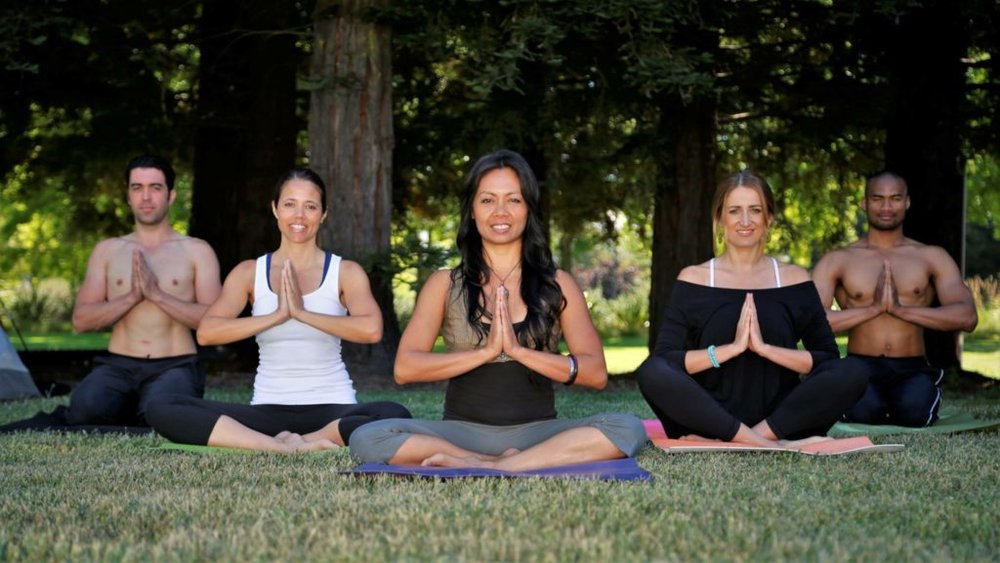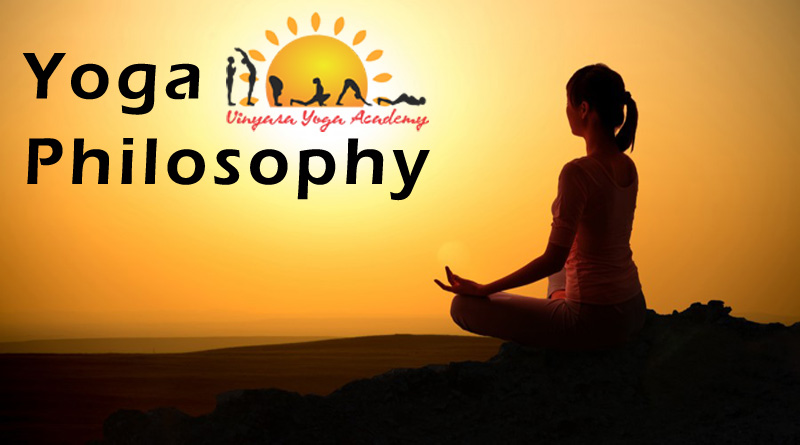
Yoga is commonly comprehended as a procedure of unification. This unification is multifaceted. In one measurement, it is a unification of the different frameworks that exist inside the person including the passionate, physical, mental, and profound frameworks. Altogether there are accepted to be five unique frameworks inside human life. These are normally alluded to as the koshas which are the physical, vivacious, mental, unpretentious, and euphoria sheaths. In our present comprehension of yoga, we are attempting to bring together these five bodies or layers of the person. Another procedure of unification happens between individual awareness and widespread cognizance.
This unification is frequently alluded to as Samadhi and is one of the essential changes that happen inside the act of yoga. Watching this from an alternate point, Samadhi is a change of observation in which dissatisfactions about the world are improved so reality behind reality can be found in its most perfect of the structure. Yoga, as a framework, has formed into different branches through which individuals seek after the advancement and unification of the components inside their being. Each branch holds its own interesting arrangement of thoughts and methods of insight which characterized the procedure and inevitable acquisition of complete unification.
There is no correct arrangement of yoga as each has its own particular attributes that oblige the requirements of different qualities and identities that exist among individuals. Every framework is intended to suit an alternate identity type, and yoga has formed into an expansive achieving framework that can be drilled by almost any individual who is keen on seeking after an otherworldly life. A training like Jnana yoga is perfect for somebody who is insightfully disapproved through the act of bhakti yoga is useful for somebody who is sincerely discerning and slanted towards a feeling of commitment. In this article, we will survey the more standard practices of yoga which are gotten from the custom of yogic otherworldliness. These conventions of yoga are as youthful as 500 years and as old as a few thousand. While there are numerous cutting edge practices of yoga which have been characterized by different instructors, the frameworks we will talk about are conventional frameworks which have been in the presence all through numerous ages.
Bhakti Yoga The main framework we will examine it is Bhakti yoga. Bhakti yoga is a training in which the otherworldly specialist centers around building up a condition of dedication inside the brain and the heart. In bhakti yoga, a solid feeling of confidence is required as one is relied upon to submit themselves to God through a procedure of self-surrendering. The practices and systems of bhakti yoga are accordingly intended to help surrendered the self-image and grasp with adoration the possibility of the maker. The more typical practices of bhakti yoga are kirtan (reciting/tune), Japan (mantra redundancy), and reflection on the heavenly.
Generally, the act of bhakti yoga is encouraged to be polished by the individuals who are all around associated with their feelings and furthermore responsive to increasingly unobtrusive emotions inside themselves as well as other people. Earnest love characterizes the act of bhakti-yoga as the specialist commits their entire being towards the profound awesome. Faith in God or a higher being is imperative to the training, and without it, it is close to difficult to rehearse bhakti yoga. The commitment that is rehearsed by the Bhakti Yogi isn’t one of subjection towards the heavenly. Or maybe, it is a relationship that is loaded up with adoration, kinship, and fellowship. In bhakti yoga, individuals see God as a companion, a darling, a dad, or mother. It is through this relationship that bhakti yoga is rehearsed. There are numerous parts of dedication for the bhakti yogi; there are numerous types of God that are loved in yoga including Shiva, Vishnu, Brahman, Parvati, and so forth. Besides the supernatural types of God, a master or instructor can likewise be adored inside the training. The main role of this training is to help in giving up the inner self and bringing together the individual being with the general.
Karma Yoga Karma is a part of human life that is in charge of our musings, emotions, and activities. It is had faith in yoga that Karma keeps the cycle of resurrection in movement as past activities and occasions constrain us to take another life on the planet to adjust the imbalances that we include forced inside our soul and the universe. When aggregated Karmic merit is adjusted or pulverized at that point cycle of birth and demise is ceased and the soul comes back to its sources inside the general celestial. The act of Karma yoga straightforwardly addresses this essential part of life, attempts to cancel the impacts of Karma with a taught activity that plans a partition between the individual and the impacts of Karma. This partition happens through a procedure of disassociation in which the individual isolates themselves from the advantages or misfortunes from their activities inside the world.
The act of Karma yoga is regularly based around one’s Dharma or obligations inside the world. Dharma is dictated by the activities of the person before, including both the past of the present life just as the past of past lives. In certain regards, Dharma is the best route for a person to utilize their time on earth for otherworldly advancement as it depends on the reasonable limits and capability of the person. One of the principal parts of Dharma is acting on the planet without thought of the advantages or misfortunes of one’s activities. The expert lives and acts inside the world with no desires or forced impressions of how the future ought to unfurl. The psyche is centered around magnanimous administration and working to support more prominent’s benefit rather than the autonomous needs of the person. In Karma yoga, the training is continuous as the individual gradually gives up the obligations of karma and frees the soul from the limits of egocentric manners of thinking.
In spite of the fact that a Karma yogi may rehearse systems, for example, the asanas, breathing practices, and contemplations, the essential focal point of their otherworldly practice is administration and activities with the focal point of benevolence and humbleness. The principal notice of Karma yoga is inside the Bhagavad-Gita in discourse among Arjuna and Krishna. In this discourse, Krishna illuminates Arjuna that he can consolidate his awareness with Krishna’s the point at which he surrenders his activities to the perfect (which for this situation is Krishna). Krishna urges Arjuna to act and pursue out his obligation without stress or thought of the advantages or misfortunes of his activities. He advises Arjuna that acting for the sake of Krishna (or perfect) will furnish him with the freedom that he has put forward to accomplish.
Kundalini Yoga Kundalini yoga is a routine with regards to yoga which began from the act of tantra yoga. Generally, tantra yoga is accepted to be one of the most seasoned types of otherworldliness which are still by and by today. One of the key parts of tantra yoga is the consolidation of kundalini which is viewed as the primordial power presence inside every individual. The act of Kundalini yoga was framed to control and outfit the capability of the kundalini vitality inside the body. In contrast to alternative frameworks of yoga, kundalini yoga can be an exceedingly insecure routine with regards to yoga as the arrival of kundalini vitality can prompt extraordinary mental and physical disarranges if not controlled in the best possible way.
Along these lines, the act of kundalini yoga is an exceedingly propelled framework which is normally just rehearsed by the individuals who are very much progressed in the acts of otherworldliness. One of the essential requirements of kundalini yoga is a solid personality and a sound body without which the arrival of kundalini vitality can be harming or even lethal. Indeed, even a particular term in brain science known as kundalini disorder has been created for the individuals who have gone into dementia as a result of the inappropriate arrival of kundalini vitality. In kundalini yoga, the strategies exhibited are intended to help stir the kundalini vitality. Beside its definition as the primordial vitality, kundalini is otherwise called the snake vitality. Before its enlivening, the kundalini vitality rests at the base of the spine as a spiraled curl like that of a snake. Whenever discharged, the kundalini vitality shoots up through the spine, advancing towards the crown of the head. Contingent on the cleaning of the vitality channels along the spinal section known as chakras, the kundalini will either achieve its last goal and the head or will be stuck inside one of the chakras. Typically kundalini yoga begins by purging all the chakras. This cleaning keeps up an equalization stream of prana inside the body. It is trusted that a parity stream of prana inside the body prompts a sound perspective and body. When the body, mind, and pranic channels are cleansed, the professional of kundalini yoga attempts to discharge the kundalini vitality. The sanitization procedure a basic nature of the training as it guarantees a smooth stream of kundalini vitality through the chakra framework.
For both the sanitization of the chakras just as the arrival of kundalini vitality a wide assortment of methods is actualized. These incorporate yoga asanas (stances), pranayamas (breathing practices), reflections, and mudra (motions) explicitly intended to help control the pranic vitality and stir kundalini. In contrast to a portion of alternate frameworks of yoga, kundalini yoga ought to never be rehearsed through self-preparing. It is imperative that one who is keen on rehearsing kundalini yoga finds a capable expert and instructor of this arrangement of yoga to control them through the procedure. Without such direction, all things considered, serious physical and mental disarranges will emerge as kundalini vitality is an exceptionally powerful component inside the human body that isn’t intended to be tempered with except if the body, mind, and pranic channels are completely decontaminated. There are endless stories of people who discharged kundalini yoga rashly and ended up in a bewildered and masochist state. There are numerous books distributed on kundalini yoga and the individuals who have encountered kundalini vitality dependably encourage to have a very educated and attentive educator to direct an expert through the arrangement of kundalini yoga.
Hatha Yoga The word Hatha has a few implications. Regularly it is isolated up into two individual words, ha and Tha. The importance of these words can be translated as the sun and the moon. It can likewise be said that these two words are Beeja Mantras or primordial sounds that are in charge of making matter. In the meantime, he speaks to the pranic body while Tha is that of the psychological body. Whichever elucidation one accepts or pursue, a basic part of hatha yoga is adjusting of the polarities of vitality inside the body (Ida and Pingala) just as sanitization of the brain and the body.
The vast majority, in a cutting edge setting, consider hatha yoga to be a routine with regards to the physical body. While this isn’t inaccurate, hatha yoga incorporates a lot more rationalities and strategies that address progressively unpretentious parts of the human framework. One of the fundamental parts of hatha yoga is the component of filtration. In hatha yoga sanitization happens inside the numerous parts of the individual; there is a filtration of the physical, mental, and fiery, and enthusiastic bodies. It is trusted that once the majority of the bodies are purged than otherworldly headway towards self-freedom can happen. In contrast to Raja yoga, which we will talk about later, hatha yoga does not layout an essential of good qualities before leading the strategies of yoga. Or maybe, hatha yoga starts with the yoga stances or asanas and the enthusiastic sanitization procedures of pranayama. When an impressive comprehension of these two practices is accomplished, further developed strategies including Shatkarmas (body purging), Pranayamas (nadhi purifying), Mudras (vitality directing), Buddhas (vitality locks), and different systems which lead towards Samadhi (self-acknowledgment) can be drilled.
Like most practices of yoga, hatha yoga keeps up the conviction that methods, for example, reflection and focus should just be drilled after the body and the brain having cleansed. Without such planning, it is futile to rehearse contemplation as no advantage will be gotten from the training. Hatha yoga began from various messages which were all composed between 500-1500 A.D. In contrast with alternate types of yoga we are talking about, hatha yoga is the most youthful of all with its real content the Hatha Yoga Pradipika being concluded in the sixteenth century.
Hatha yoga could be viewed as a primer practice to further developed frameworks of yoga, anyway, it has inside itself the ability to lead towards profound freedom. A progressively humble arrangement of yoga, hatha yoga can be polished by a great many people and does not require an entrenched personality and body to start the training. In this manner, it is a training utilized by numerous who wish to utilize yoga as a guide towards profound opportunity.
Raja Yoga Raja yoga is viewed as the Royal way and is truly interpreted as an imperial association from Sanskrit. The arrangement of Raja yoga is gotten from the lessons of Patanjali in the Yoga Sutras which were composed somewhere in the range of 100 and 300 A.D. Some may likewise allude to this arrangement of yoga has Ashtanga Yoga, anyway Raja yoga has been the conventional phrasing utilized for the act of yoga guided by Patanjali’s Yoga Sutras and a few refinements separate the two from each other. Here, we are basically worried about the conventional arrangement of Raja yoga which has been polished in India since the sources of the Sutras. Raja yoga is a way of instinct and furthermore mystic discernment. In this way, these two offices are required all together for profound development to happen. Some profound experts like Swami Tureyananda trust that Raja yoga is drilled after one has acquired generous change through starter practices of yoga.
Indeed, even still some different educators trust that the act of Raja yoga is started after primer conditions of Samadhi are experienced. Subsequently, Raja yoga isn’t training for by far most of the individuals. In the yoga sutras, Patanjali daintily traces the requirements for the further developed procedures of yoga. By far most of the yoga sutras are given to understanding and controlling the psyche including its four segments of Chitta, Buddhi, Manas, and Ahamkara. Extensive consideration is given to how the mind functions and works just as the different dimensions and measurements that exist inside the psyche. The rest of the content talks about the phases through which one experience along the way towards self-acknowledgment, and consideration is given to all the different entanglements that can emerge en route. The arrangement of Raja yoga is commonly sketched out in characterized inside the “8 limbed way.” These appendages include:
Yama-set of accepted rules and patience
Niyama-religious observances, commitment to ones practice, and control
Asana-development of a steady seat for both the brain and the body
Pranayama-guideline of breath which prompts a unification and harmony between the body and the psyche
Pratyahara-withdrawal of the tangible organs of observation from the outside condition including each of the five detects (six on the off chance that you incorporate the psyche)
Dharana-focus
Dhyana-contemplation
Samadhi-self acknowledgment, or an excessively cognizant condition of being.
Together these eight appendages structure the training and methodical methodology of Raja Yoga. Like kundalini yoga, Raja yoga requires a lot of direction and course without which numerous issues and extreme disappointment will emerge. It is hence fundamental that one who is keen on rehearsing Raja yoga finds an instructor or master who has consummated the framework and has accomplished a genuine condition of
Jnana Yoga The act of Jana yoga is effectively comprehended inside the two words ‘Jana’ and ‘Yoga’ which together signify ‘Association through Wisdom.’ the act of Jana yoga is an extremely commonsense framework for the Western personality which more often than not approaches things through the keenness and discerning finding. While at last these two perspectives are surrendered later in the way, Jana yoga starts with scholarly request and sound perception. While Jana yoga empowers a faith in God or the incomparable, it doesn’t require the conviction and along these lines, it can even be utilized by the individuals who are normal agnostics. The systems utilized in Jana yoga are fundamentally worried about a procedure of conclusion in which one watches all parts of life.
A procedure of self-request and addressing is embraced as the specialist progressively expels the hallucinations and misperceptions of the psyche as they move in the direction of the reality of their most fundamental nature. The act of Jana yoga can be comprehended inside the basic Sanskrit state “Neti, Neti,” which is transparently deciphered as not this, not that. In Jana yoga, one evacuates the different layers of the onion of their brain until they achieved the center which is no-thingness or unmanifested. Jana yoga has four noteworthy rules which prompted the expert towards self-acknowledgment. As Jana yoga is essentially an arrangement of the request, it doesn’t require systems, for example, pranayama and asanas so as to accomplish self-acknowledgment. The four rules of the Jana Yogi include: Viveka-Discrimination (among truth and not truth); Vairagya-Dispassion (from connection world and the brain/body); Shad-Sampat-Six Virtues (peacefulness, dama (tactile control), uparati (renunciation), titiksha (continuance), Shraddha (confidence), and samadhana (focus)); and Mumukshutva-aching for freedom.
End If you have perused this article for finding an arrangement of yoga to enable you to develop profoundly, it is prudent to do an additional investigation into the frameworks that appear to be good to your requirements and character. Few out of every odd individual is rehearsing yoga for self-acknowledgment. Every arrangement of yoga gives its own special advantages that advance from the training and along these lines can be drilled without the expectation of accomplishing self-acknowledgment. While a definitive objective of yoga is freedom, there are numerous advantages of the training that normally happens as the body, brain, and vitality inside the individual are decontaminated. As referenced already, on the off chance that you choose to take up the act of Raja yoga or kundalini yoga it is ideal to look for an accomplished guide before starting the training. Be that as it may, eventually, every arrangement of yoga requires a master or proficient expert who can coordinate the understudy through a particular arrangement of yoga.
Each style that we have referenced above is one of a kind and there is no set in stone one or one that is superior to the next. In fact, there are a large number of various styles of yoga, yet the ones we have referenced are the essential branches for the commonsense side of yoga. While picking a training, select one that appears to have attributes that are in concordance with your identity and independence. Beginning from that point will give you a decent relationship to your training and make it simpler to bit by bit bring it into your life consistently. A steady practice gives the best chance to self-development and change.
 Bring Your Best You Your No.1 Healthy Lifestyle Blog
Bring Your Best You Your No.1 Healthy Lifestyle Blog



